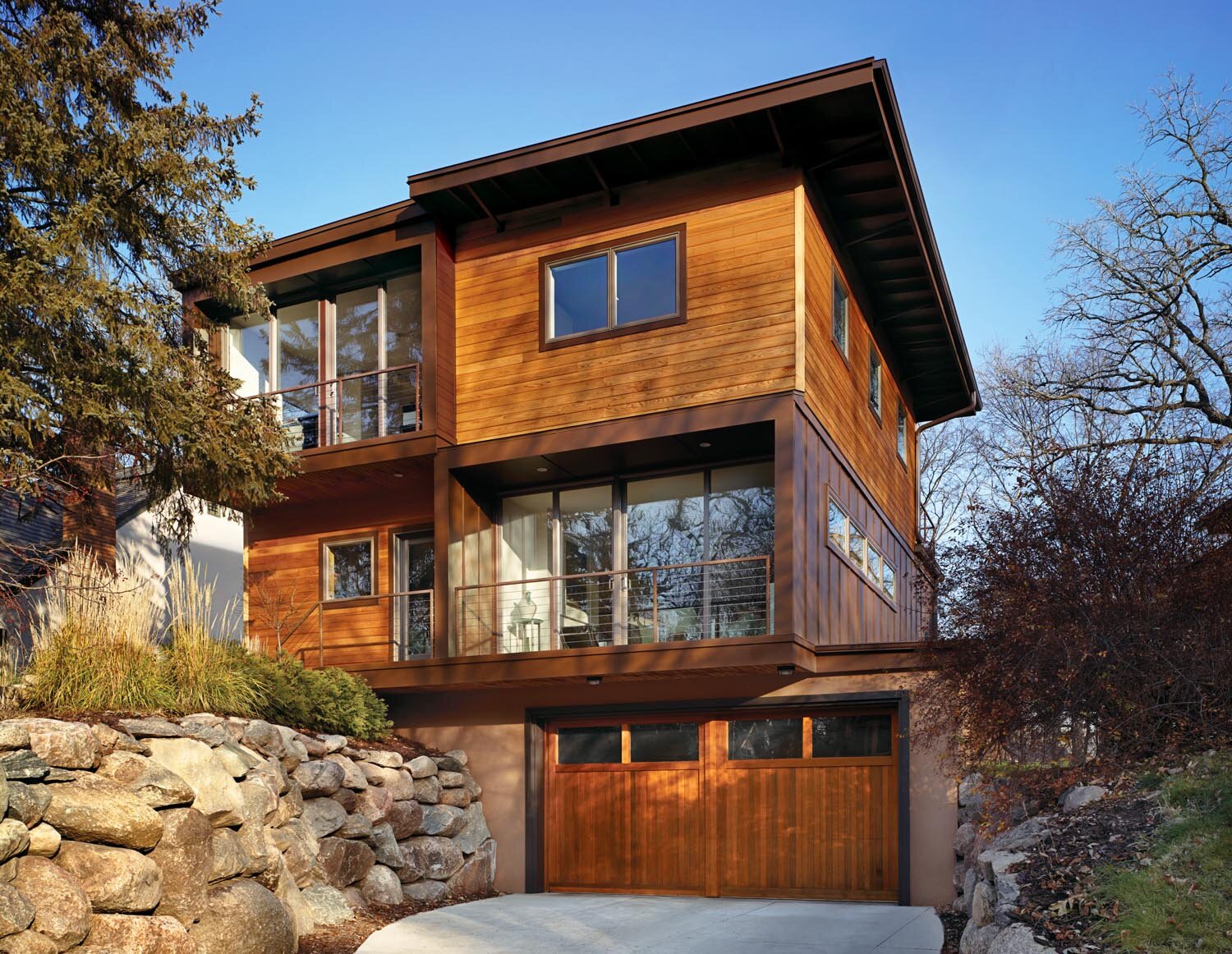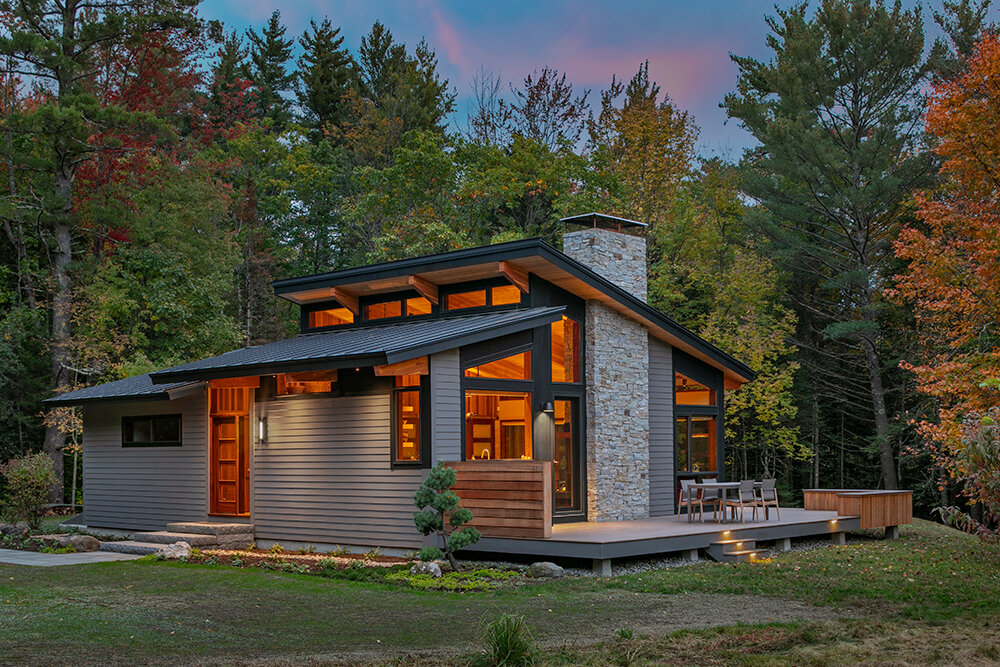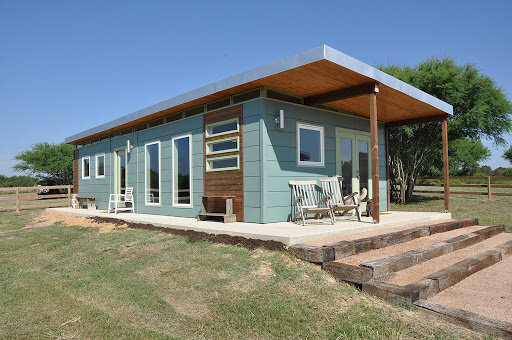Guide to Prefab and Modular Homes in Boston, Massachusetts

Our guide to buying a prefab or modular home in Boston, Cambridge, Cape Cod, the Berkshires and the surrounding suburbs is designed to provide you with city specific information for questions such as “how long will it take?” and “how much will it cost?”. We have also expanded the scope of our guide to prefab and modular homes in Boston to include suburbs such as Brookline, Somerville, Newton, Lexington, Wayland, Weston, and Newton and towns on Cape Cod such as Provincetown, Falmouth, and Yarmouth and in the Berkshires such as Lenox or Pittsfield. Our guide to buying and building a prefab or modular home in Boston follows below and for free, project specific information, connect with one of our staff members via Prefab Concierge.
Why Might You to Want to Build a Prefab Home in Boston, Massachusetts?
Quicker Build and Installation Times - prefab and modular homes are manufactured off-site, in a controlled environment and then later assembled at the build site. The efficiency of off-site manufacturing facilities often allows for quicker build times
Due to unpredictable winter weather in Boston and Cape Cod, traditional site-built homes may suffer weather-based setbacks. Prefab homes however, are manufactured indoors and the manufacturing process can continue year-round
Cost Controlled - with a highly controlled build process (homes are manufactured in climate-controlled warehouses), unforeseen cost overruns can be better managed leading to reduced overall cost. This is especially important for expensive areas in the Boston metro area such downtown Boston, Back Bay, Cambridge and the South End or in high cost areas on the Cape such as Provincetown
Sustainable & Modern - many prefab builders that serve Boston and the surrounding areas of Massachussettes can build energy efficient, net-zero homes. Many manufacturers specialize in homes that are LEED and Passive House certifiable
Key Decisions to Make:
Home Location - building in an expensive area of Boston such as in Cambridge,or wealthy suburbs such as Brookline, Newton or Wellesley might have high up-front costs but a prefab home in these (or other high-cost) areas can be a sound long-term investment. When buying property you should be mindful of a few things that could affect your home build:
Slope of lot - while this is not a major concern for most building lots in the Boston Metro area, building lots with a significant slope may be unsuitable for some pre-engineered floor plans
Set back requirements
Floor area ratio or other zoning protocols that may affect the size of the home
Whether or not your neighborhood requires a design review
Standard vs. Custom - While many prefab manufacturers that operate in Boston and other areas of Massachusetts offer pre-designed floor plans some also offer options for partial or total home customization. This is in addition to companies who primarily serve as prefab designers and only work on custom prefab and modular homes. If you live on a tricky lot (uneven terrain, small-lot size, etc.) you may face a limited offering of standard home designs that are suitable for your situation - in these situations a custom home may be your best option
Modular vs. Kit Home v.s. Panelized - While all three of these construction techniques qualify as prefab home building techniques, there are nuances that you should know when building your own prefab house. These prefab home styles include:
Modular - homes are made up of multiple box-like modules. These modules are fully assembled and consist of floor, walls, ceiling, wiring, plumbing, and internal fixtures. These modules are constructed off-site and then later shipped to your desired location. Once on site, they are joined and connected to the foundation. Modular construction is one of the most affordable prefab building techniques.
Kit Home - all materials and components necessary for building a home are delivered to the build site. In most cases, an owner-builder can assemble the kit home themselves as a cost-saving method.
Panelized - the home’s structural components: walls, floor, ceiling, are manufactured off-site and then later constructed at the final site like a traditional build. While somewhat similar to modular construction, panelized building offers more flexibility in the home build process.
Architect vs. All-in Company - There are many steps in the prefab home build process. Major steps include land acquisition, home design, manufacturing, and assembly. When selecting a company for your prefab home, you should pay attention to the services your company offers. In some cases the company you choose may only offer a home design your home and therefore sub-contract out the manufacturing process. This leaves you responsible for acquiring land and later finding a builder to assemble the home. Other companies however, may be a one-stop shop and assist you in all stages of the home build process.
Financing your home - unless you are planning to pay for your home in cash, you are likely going to need outside financing for your prefab home. The two most common ways of financing a prefab home build are:
construction loan - a short term loan that you can refinance once construction is complete
temp to perm loan - a construction loan for the duration of construction that converts to a normal mortgage once your house is finished. The advantage of these loans is you only have one mortgage close vs. two with just a construction loan.
These methods usually allow you to finance both the land purchase and the construction of your home however, the underwriting and approval process on these loans can be lengthy (60+ days) as the bank is not only underwriting you as a borrower, but also the viability of your building plans. To get land imore quickly, buyers will often pay cash for their building lot and then the lender will credit the land purchase as a down payment percentage on the purchase.
Some of the best lenders for these products only operate regionally. Therefore, if you would like assistance we can provide recommendations here.
If you’re looking to purchase an ADU (accessory dwelling unit) or tiny home, then you may want to consider a personal loan:
Many personal lenders allow you to borrow up to $100k with no down payment
These loans are typically amortized over a shorter period than mortgages (up to 12 years)
These loans typically don’t underwrite the property and instead underwrite you as a borrower
Many of the best personal lenders are online and serve almost the entire country
The time to get approved for a personal loan is generally pretty fast (as little as a day to up to a couple weeks)
Common Questions
How much will it cost to build a prefab house in the Boston Metro area?
While certain variables such as location, builder, and floor plan will affect the total cost of building your home, it is our experience that the final cost of your prefab will range between $150 and $450 per sqft before the cost of land, as of June, 2019.
Is a prefab home a good investment?
Yes, in areas where the total cost of building your prefab home (land cost + building costs) is less than the average dollar per square foot sales price of homes in your neighborhood i.e. you are able to sell your home for more than it cost to build it. In the greater Boston area, that includes areas where the average sale price per square foot is $350 per sq ft or higher. This includes most parts of Boston, Cambridge as well a high end areas of the greater Boston suburbs
Can I finance a prefab home in the Boston area?
Yes. The most common way to finance a prefab home is a temp to perm loan. This financing method starts out as a loan for the construction of your home and converts to a mortgage once your home is completed. Another financing option is a construction loan which is a short-term loan that you then refinance once the construction process is finished
What do the economics of an investment in a prefab home look like?
Our table (below) is an example of what the costs and potential benefits of a prefab home investment might look like. While there may be high up-front costs, there is still a chance for a sizable return on your investment. In Boston and its surrounding areas, much like other competitive real estate markets in the United States, one of the most challenging parts of the build process is finding a building lot at a reasonable price. In some cases it might be cheaper to buy and tear-down an existing home rather than purchase a vacant, build-ready lot.
| Item | Unit | Brookline, MA | Cambridge, MA | Provincetown, MA | Notes |
|---|---|---|---|---|---|
| Cost To Build | |||||
| Cost of lot including closing costs & buyers agent | $ | 1,400,000 | 1,050,000 | 80,000 | |
| Cost of prefab home + construction | $ | 900,000 | 1,137,500 | 815,000 | |
| Loan Rate | 4.50% | 4.50% | 4.50% | ||
| Loan | $ | 124,200 | 118,125 | 48,330 | 4.5% APR (interest only), 18 months project time, 20% down |
| Value of tax deduction | $ | -43,470 | -41,344 | -16,916 | Assumes income to deduct and 35% marginal tax rate |
| Total cost to build | $ | 2,380,730 | 2,264,281 | 926,415 | |
| ARV (after repair value) | This is the term for post-construction value | ||||
| $ per sqft comps for new construction | $ | 1,000 | 790 | 850 | |
| Size of new home | Sqft | 3,000 | 3,250 | 2,500 | |
| Cost to buy similar home | $ | 3,000,000 | 2,567,500 | 2,125,000 | |
| Return On A Flip | |||||
| Sale price | $ | 3,000,000 | 2,567,500 | 2,125,000 | |
| Cost to Build | $ | $2,380,730 | $2,264,281 | $926,415 | |
| Broker Fees | $ | $180,000 | $154,050 | $127,500 | 6% |
| Closing costs | $ | $60,000 | $51,350 | $42,500 | 2% |
| Profit before taxes | $ | 379,270 | 97,819 | 1,028,585 | |
| PLEASE NOTE: THESE MODELS ARE NOT GUARANTEES AND SHOULD NOT BE CONSIDERED FINANCIAL ADVICE. THEY ARE FOR EDUCATIONAL PURPOSES ONLY AND PURELY ILLUSTRATIVE EXAMPLES OF POTENTIAL BUYING SCENARIOS. BUYERS SHOULD DO THEIR OWN DILIGENCE BEFORE MAKING ANY PURCHASE. | |||||
How long will it take?
The answer to this question depends a lot on your particular location. Your town’s permitting and building process will play a large role in determining the timeframe for your build. Total, the build process can take between 1-2 years and maybe longer if there is a design review process.
Planning Departments in and around Boston
Reputable Companies that Serve Boston and Surrounding Areas
Offers 100+ stock designs with the option for custom designs, has built 500 homes on Nantucket alone
All-in-cost: $160 - $275+ per sqft
New, luxury homemaker with 9 models, all of which are passive, modern, and boxy, with sizes ranging from small ADUs to large 4000 sqft luxury homes
All-in-cost: $300 - $450+ per sqft
Builds 11 homes ranging from 600 to 2500 sq ft, each of which are passive house certifiable
All-in-cost: $230 - $350 per sqft
Specialize in luxury prefab homes with 11 pre-engineered floorplans or the option for a custom design
All-in-cost: $350 - $500+ per sqft
With over 50 models of pre-engineered floor plans and the additional option for custom floorplans, their main strengths are rooted in their long operating history and variety of design options, most of which feature natural wood accents
All-in-cost: $285 - $420 per sqft
Builds custom homes in traditional styles such as capes, colonials, and ranches in addition to designs from outside Architects
All-in-cost: $150 - $265 per sqft
Offer 5 styles of pre-engineered homes that can be purchased in 3 separate states ranging from turnkey to shell only. Homes can also be made to net-zero standards
All-in-cost: $180 - $290 per sqft




